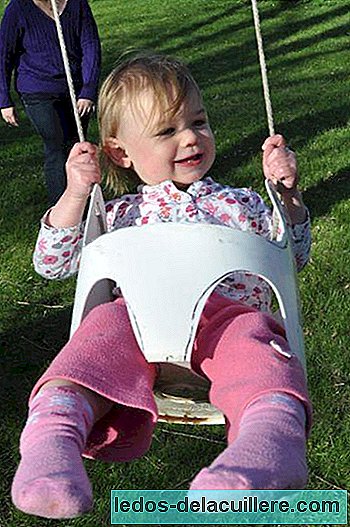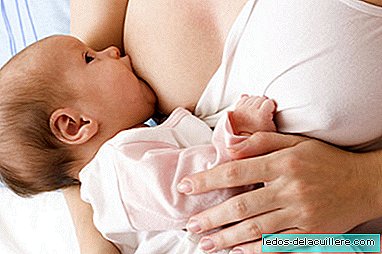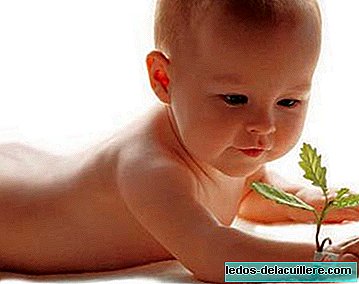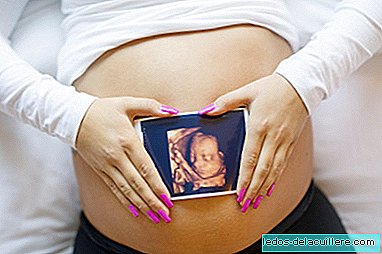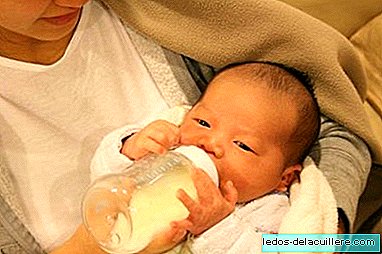
The risks of drinking artificial milk are known, although there is less talk about what it means to drink it in a bottle or bottle, since the baby's mouth is prepared for the mother's breast but not for this contraption whose oldest samples date back to 1500 BC. And although those of today have little to do with those rudimentary vessels, at least in their form, the bottles carry risks that we begin to comment.
Despite what the ads tell us and the advances in designs, no bottle resembles the shape, consistency, texture, temperature and functionality of the breast. At the breast, the baby performs more sucking movements, which contributes to a harmonious facial development and helps prevent diseases such as otitis and diction problems.
On the contrary, the use of a bottle in the infant can cause a series of alterations in the maxillofacial, oral and pharyngeal area, related to the shape of the bottle and the way the baby extracts the milk from it:
- Functional alteration of suction-swallowing-breathing. There are studies that prove the differences between the way to suck breast and bottle. The bottle-fed child must improvise functional suction-swallowing-breathing patterns to dose the extracted contents and swallow it without choking (oral motor dysfunction).
- Food aspiration risk. Prolonged apneas. The neuromuscular disorganization of suction-swallowing-breathing can be the cause of regurgitation and aspiration of food and the episodes of prolonged apnea that occur in bottle-fed children. It has been thought that artificial milk could be one of the causes of sudden death in infants. The explanation could be the alteration that artificial milk produces on sleep: babies who take artificial preparations tend to have a deeper sleep and wake up less times at night than babies who breastfeed.
- Interference in the maturation of future oral functions. An altered basic functional pattern generates a distortion of future functions, manifested as atypical swallowing, mouth breathing, masticatory dysfunction, difficulties in speech articulation, alteration of body posture ...
- Congestion of the adenoid system (pharyngeal tonsils or vegetations). The adenoid system of the retropharynx, consisting of multiple lymph nodes and vessels, is easily congested when the child has an abnormal sucking-swallowing function.
- Risks of otitis and respiratory diseases. Congestion of the adenoid system involves congestion of the respiratory mucosa and the eustachian tube. The temperature difference in more or less degrees than breast milk, and the sugar added to the bottle's contents can also cause mucosal congestion. Congested respiratory mucosa and eustachian tube become insufficient and therefore vulnerable to infection, which is one of the causes of frequent respiratory diseases, allergies and otitis media in bottle-fed infants.

- Mouth breathing habit. Episodes of congestion of the respiratory mucosa and the adenoid system force the child to seek the alternative of oral breathing to enter the necessary air into his lungs. If these episodes are frequent or prolonged, the child acquires the habit of mouth breathing, with all the consequences that this entails: lack of adequate ventilation, recurrent respiratory infections, hearing loss, impaired thoracic development and body posture, alterations of maxillo-facial development, typical elongated features and with an open mouth ...
- Alteration of the cervical-cranial posture and the vertical axis of the body. Linguo-mandibular dysfunction caused by an impaired suction-swallowing-breathing function, produces a bad compensatory position of the head and neck with respect to the shoulder girdle and the vertical axis of the body.
- Alterations of maxillo-dental development. The good development of the jaws and the occlusion or bite depend largely on the balance of the pressure-traction forces exerted by the muscles on the bone structures with which they are related. When the child is using a bottle, it does not have a suction force, which is of great importance for the balance of internal muscular pressure-tractions (tongue and palate) and external (lips and cheeks).
- Increased caries risk. Sugar or sugary foods added to artificial milk are the cause of the large number of caries presented by artificially fed children. Using teats, pacifiers or sweetened bottles is a risk factor for dental caries in childhood.
- Creation of dysfunctional sucking habits. The prolongation of the suction, be it a pacifier or a bottle, beyond the time for which it is programmed as a basic function, creates a dependency on the child, transforming into dysfunctional habits that alter the morphofunctional development of the complexes to a lesser or greater degree. oropharyngeal and dento-maxillo-facial. Therefore, the Spanish Association of Pediatrics recommends using the pacifier until the first year of the child's life, but not later.
As we can see, they are varied risks related mainly to the morphology of our mouth, prepared for the chest but not for the bottle or bottle, even the morphology of our head and back can be forced.
As for the content of the bottle, some risks are not related, but others such as the risk of tooth decay or infection do depend directly on artificial milk (that is, with a bottle of breast milk would not increase the risk).
In addition, to these points we must add that although a well-designed bottle should not have this problem, there have been cases of risk of suffocation.
On the other hand, in the long term, if the baby continues to take a bottle after the year, obesity is encouraged, and the fact that artificial milk lacks the components of breast milk that naturally protect the baby, exposes it to more diseases. It is proven that children fed artificial milk are more frequently sick with diarrhea, respiratory diseases, otitis and allergies.
However, always when preparing a bottle whatever its content there are certain risks for babies and that is why we remind you of the recommendations to prepare the bottle correctly.
Having seen all this, it seems clear that if the baby is not breastfed, bottle use should be reduced over time to avoid these risks of physical disturbances. Therefore, pediatricians recommend that it be passed to the vessel, so as not to acquire “vices” that cause the oral structure to deform and give rise to the problems seen more easily.





